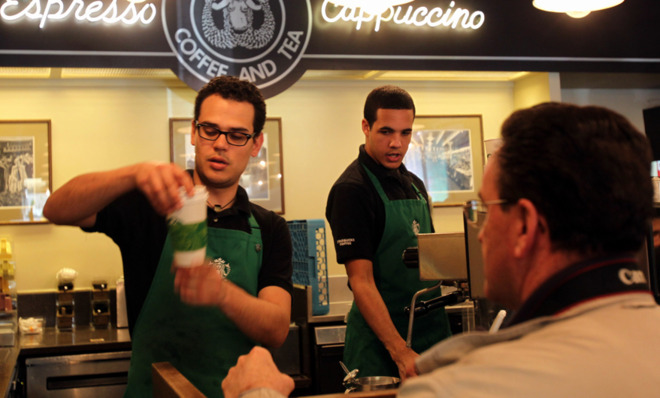Why your brain thinks Starbucks is way under-priced
You'd probably pony up a little more for that orange mocha frappuccino

What's the most you'd pay for a small coffee at Starbucks? $2.50? $3.00?...$3.50?
That's the question German neuroscientist Kai-Markus Müller set out to answer in a recent study. And he found that we're significantly underpaying for our overpriced coffee — or at least we think we are.
Müller, who used to work at Simon, Kucher & Partners, a consulting firm that helps companies figure out how to price their products, is convinced that classic market research is unreliable because subjects don't accurately state how much they would be willing to pay for something.
The Week
Escape your echo chamber. Get the facts behind the news, plus analysis from multiple perspectives.

Sign up for The Week's Free Newsletters
From our morning news briefing to a weekly Good News Newsletter, get the best of The Week delivered directly to your inbox.
From our morning news briefing to a weekly Good News Newsletter, get the best of The Week delivered directly to your inbox.
His solution was to look at the part of the brain "that monitors proportionality independent of reason," says Der Spiegel. This patch of grey noodles makes judgments about what goes together, like "coffee and cake," for instance. It decides what doesn't go together, like coffee and a $100 price tag.
Müller hooked subjects up to EEG brain scanners and showed them several pictures of a small cup of Starbucks coffee. The company sells it for about $2.45 in Europe, but Müller attached different prices to each image.
What he found: The brain reacted violently to clearly bad pricing — whether it was 10 cents, or 10 euros. "When the brain was expected to process unexpected and disproportionate prices, feelings of shock, doubt, and astonishment manifested themselves," Müller told the paper.
So what was the sweet spot? The subjects' brains were most comfortable in the $2.85 to $3.25 range — a huge margin above what Starbucks is now charging for a cup.
A free daily email with the biggest news stories of the day – and the best features from TheWeek.com
"In other words, the company is missing out on millions in profits, because it is not fully exploiting consumers' willingness to pay money," Müller concludes.
Müller's work builds on past studies that use brain scans to try to shed light on the mystery of marketing. For years, a lab called Sands Research in El Paso, Texas, has studied how shoppers make decisions in the real world. For one study, researchers suited subjects up with EEG caps and eye-tracking glasses, and sent them to the supermarket to see how their brains acted while shopping.
The researchers found that the "vast majority (76 per cent) of U.S. grocery shoppers make their purchase decisions in-store, and that shoppers using non-cash payment methods are most likely to make impulse purchases," says The Telegraph. "So shelf-placement and in-store marketing are more crucial than ever." Sands Research also uses brain scans to map out the way our brains react to Super Bowl commercials.
Müller's study, however, is the first to directly tap the brain as a pricing tool. And just like with the other studies, our brains had no problem helping the "neuromarketers" out.
Carmel Lobello is the business editor at TheWeek.com. Previously, she was an editor at DeathandTaxesMag.com.

